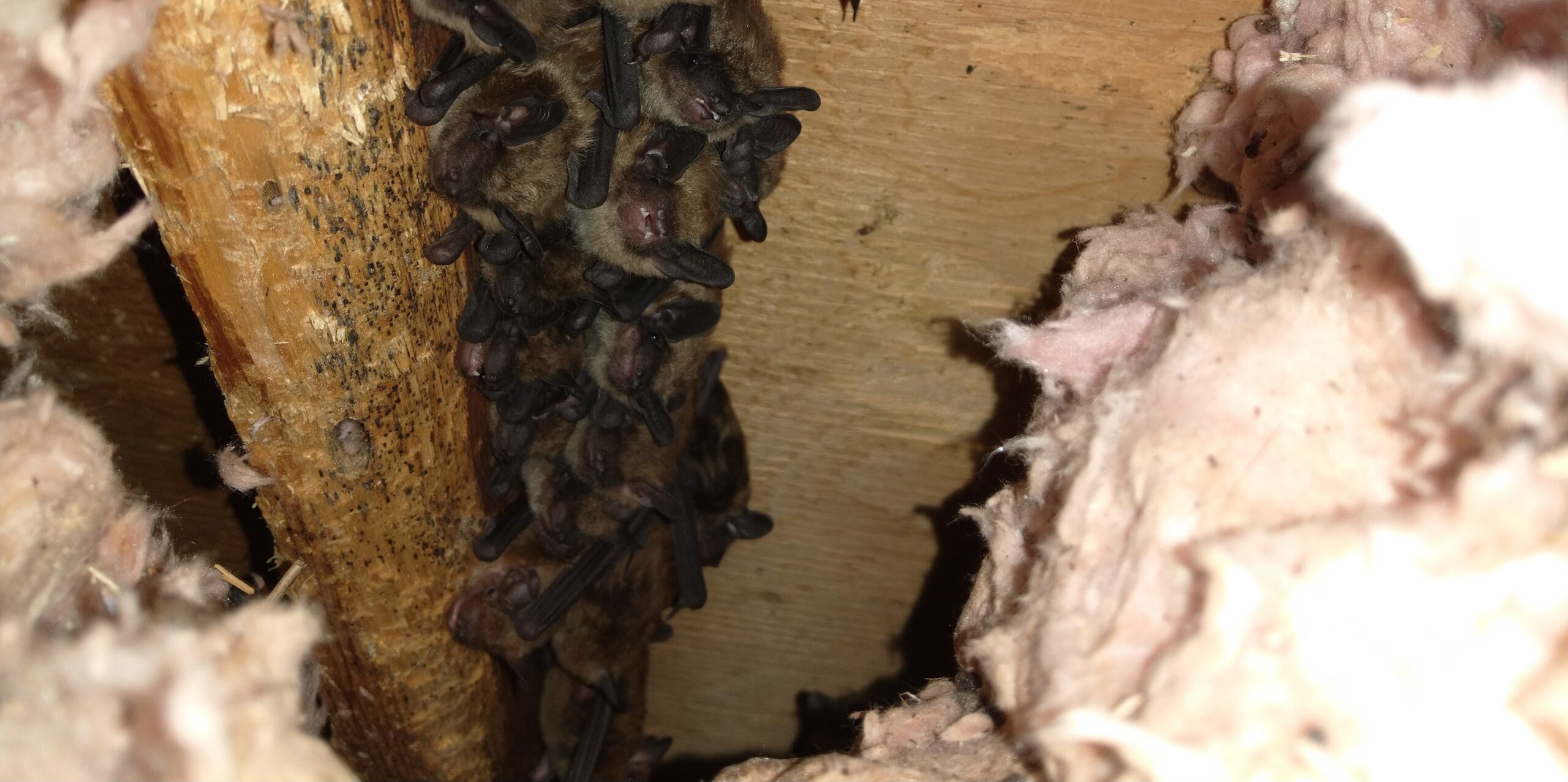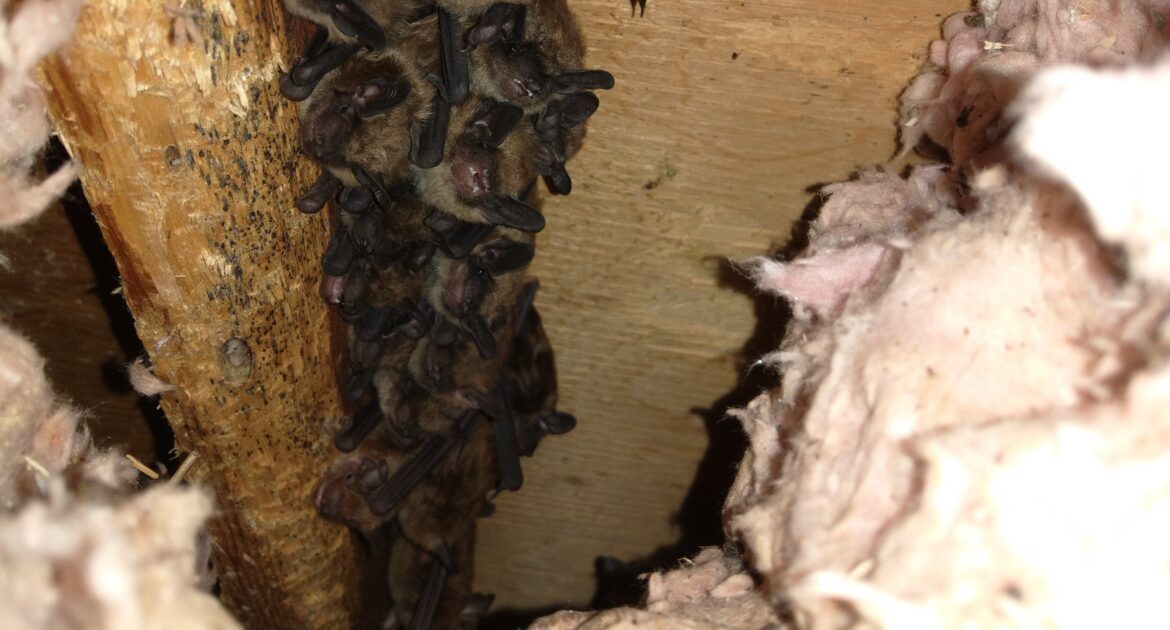Bats are some of nature’s most fascinating and misunderstood creatures. If you live in Denver, you’ve likely encountered these winged mammals or at least heard stories about them. Unfortunately, misconceptions about bats are all too common, leading many people to fear these helpful animals unnecessarily. At Skedaddle Humane Wildlife Control, we regularly meet homeowners who are terrified when they discover these animals near their property, yet most of these fears stem from bat misconceptions rather than facts.
While it’s true that bats require professional management when they take up residence in your home, understanding these creatures better can help reduce unnecessary fear. With the Rocky Mountains providing a natural habitat nearby, residents share their environment with several species that play crucial ecological roles. Let’s separate fact from fiction and explore why these nocturnal neighbors deserve our appreciation rather than fear.
Are Bats Actually Dangerous? Separating Fact from Fiction
When most people think about bats, they immediately picture creatures that attack humans, spread diseases, or get tangled in hair. These myths have persisted for generations, but they simply don’t align with reality.
The Truth About Bat Aggression
Bats are naturally shy animals that actively avoid human contact. Despite popular portrayals in horror movies and Halloween decorations, they do not:
- Attack people unprovoked
- Target humans as prey
- Deliberately fly into people’s hair
Flight behavior explained: What many mistake for aggression is actually disorientation. When a bat flies erratically near a person, it’s typically confused by echoes from its echolocation bouncing off nearby objects or attempting to catch insects attracted to humans.
In Denver’s urban areas, these animals are much more concerned with feeding on insects than interacting with people. A single bat can consume thousands of mosquitoes and other pests each night, making them beneficial neighbors rather than threats.
Health Concerns: Legitimate vs. Exaggerated
While it’s important to approach wildlife with appropriate caution, many health risks associated with bats are significantly overstated. The most common concerns include:
- Rabies transmission: Yes, bats can carry rabies, but only a small percentage (less than 1%) are infected. Transmission requires direct contact through a bite or scratch.
- Histoplasmosis: This respiratory infection comes from fungal spores that can develop in guano, primarily in cases where large amounts have accumulated over time.
- General disease vectors: Like many wild animals, bats can carry various pathogens, but casual exposure is unlikely to cause issues.
The reality is that most health risks occur only with direct handling of bats or substantial exposure to their waste. For the average resident who observes them from a distance, these animals pose virtually no health threat.
Common Myths About Bats Debunked
Some of the most persistent misconceptions continue to circulate despite being easily disproven by science. Let’s address these myths head-on.
“All Bats Drink Blood”
Perhaps the most damaging myth is that all bats are “vampires.” In reality:
- Only 3 of the 1,400+ species worldwide feed on blood (vampire bats)
- None of these species live in Colorado or anywhere in the United States
- The vast majority, including all species in Denver, eat insects, fruit, nectar, or pollen
A bat’s diet: The species found around Denver primarily consume night-flying insects like moths, beetles, and mosquitoes. A single bat can eat up to its body weight in insects each night, providing natural pest control that benefits gardens, farms, and outdoor activities throughout the region.
“Bats Are Flying Rodents”
Another common misconception is that they are simply “flying mice” or rodents with wings.
The truth:
- Bats belong to the order Chiroptera, completely separate from rodents (order Rodentia)
- They are more closely related to humans than to mice or rats
- They are the only mammals capable of true flight (not just gliding)
This distinction matters because it helps us understand behavior and biology, which is quite different from rodent patterns. When we encounter bats around homes, their needs and behaviors require specialized approaches.
“Bats Are Blind”
The saying “blind as a bat” has led many to believe these animals cannot see.
The reality: Bats have fully functional eyes and can see quite well, particularly in low light. What makes them special is their additional sense—echolocation—which allows them to navigate and hunt in complete darkness by emitting high-frequency sounds and interpreting the echoes.
This sophisticated sensory system is one reason they can be such efficient insect predators in the night sky, helping to control mosquito populations during summer months.
The Beneficial Side of Bats in Denver’s Ecosystem
Far from being creatures to fear, bats provide significant benefits to Denver’s environment and economy.
Natural Pest Control Experts
One bat can consume up to 1,000 mosquitoes in a single hour, making them nature’s most effective insect control specialists. For local residents, this means:
- Fewer mosquitoes and biting insects during outdoor activities
- Reduced need for chemical pesticides
- Protection for gardens and local agriculture from insect pests
The economic value of this pest control service is estimated in the billions nationally, with Colorado’s agricultural sector directly benefiting from bat populations that target crop pests.
Pollinators and Seed Dispersers
While Denver’s species are primarily insectivorous, it’s worth noting that bats are among the world’s most important pollinators and seed dispersers. Across the United States, they:
- Pollinate over 500 plant species
- Help disperse seeds for forest regeneration
- Support biodiversity through these ecosystem services
Denver’s connection: The health of Colorado’s ecosystem, including the plants and wildlife in the nearby Rocky Mountains, is partly dependent on maintaining healthy populations.
What to Do If You Encounter a Bat
Despite understanding that bats are generally harmless, knowing how to respond to an encounter is important—particularly if one enters your home.
If a Bat Is Outside
If you spot them flying around your property at dusk:
- Observe from a distance and appreciate their role in controlling insects
- Don’t disturb roosting bats you might find in trees or bat houses
- Consider installing a bat house to support local populations while keeping them from entering your home
If a Bat Is Inside Your Home
Finding a bat in your living space requires careful handling:
- Remain calm – the bat is likely more frightened than you are
- Isolate the bat to one room by closing doors
- Open windows and exterior doors in that room
- Turn off lights inside and turn on outside lights to guide the bat out
- Wait quietly for the bat to find its way out
Important note: If there’s any possibility of direct contact with the bat or if you find one in a room with a sleeping person or child, contact public health officials for guidance about rabies risk assessment.
When to Call Professionals
At Skedaddle Humane Wildlife Control, we understand that a single bat in your home typically indicates a colony living somewhere in your walls or attic. This requires professional attention because:
- Bats can squeeze through openings as small as a dime
- Removing colonies must be done humanely and in accordance with laws protecting these creatures
- Proper exclusion requires identifying all potential entry points
- Timing is crucial due to hibernation and breeding seasons
Our trained technicians use a humane approach that ensures bats exit safely while preventing re-entry. We identify all entry points along your roof, install one-way doors that allow bats to leave but not return, and seal all gaps with our wildlife exclusion sealant.
Personal Experiences with Bats: Changing Perspectives
Many residents who once feared bats have transformed their perceptions after learning more about these misunderstood creatures. Understanding the ecological benefits bats provide, along with proper advice on safely interacting with them, has helped change attitudes.
Educating the public about the myths surrounding bats and their beneficial roles is crucial in promoting coexistence. By appreciating bats’ natural pest control capabilities and their contribution to biodiversity, we can create a more harmonious relationship between humans and wildlife.
If bats are causing a stir around your property, consider reaching out to Skedaddle for humane and effective solutions. By partnering with us, you can ensure your home is bat-free while respecting the important ecological role these animals play. Contact Skedaddle today for expert advice and professional humane wildlife control services.




